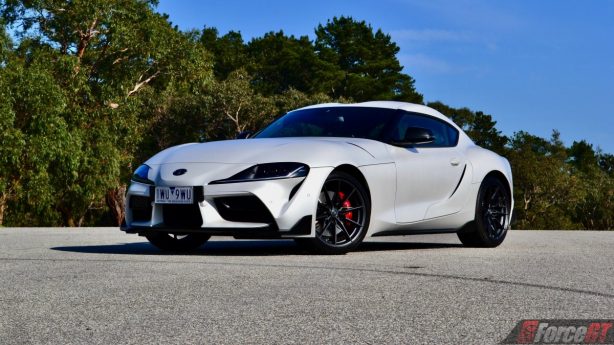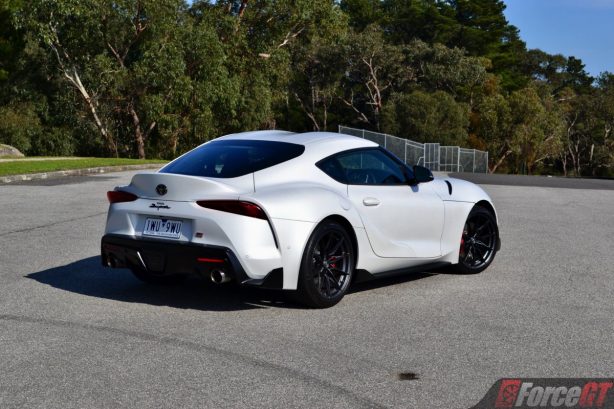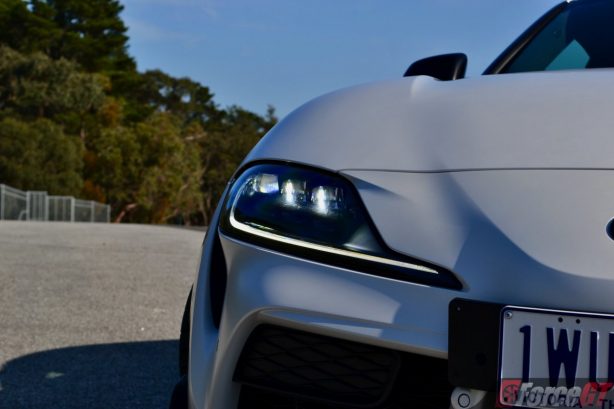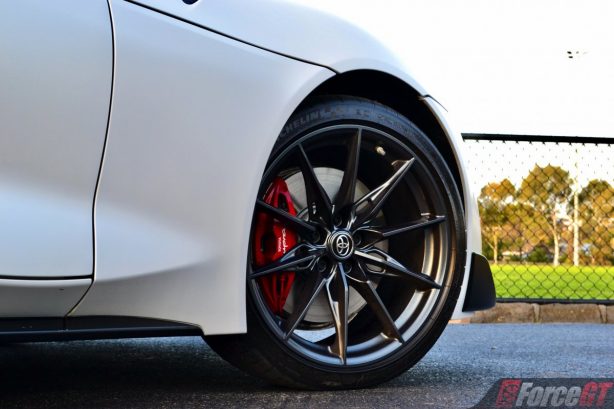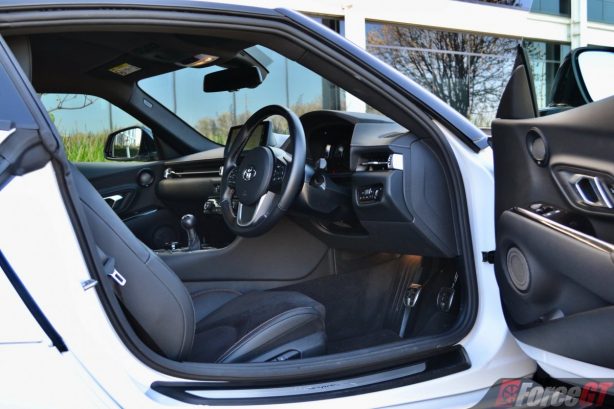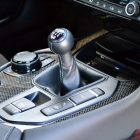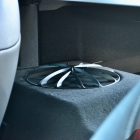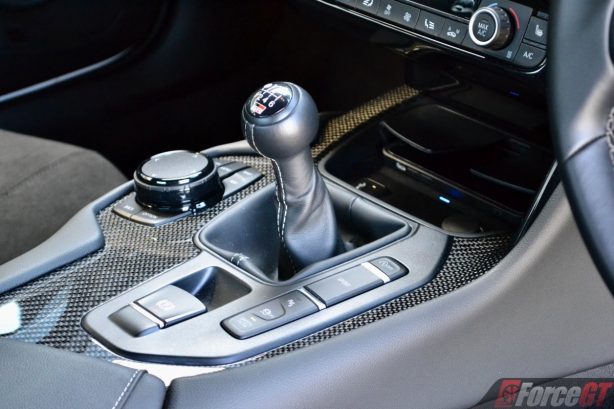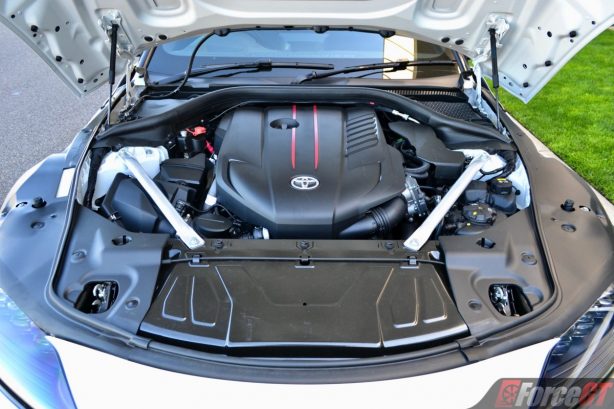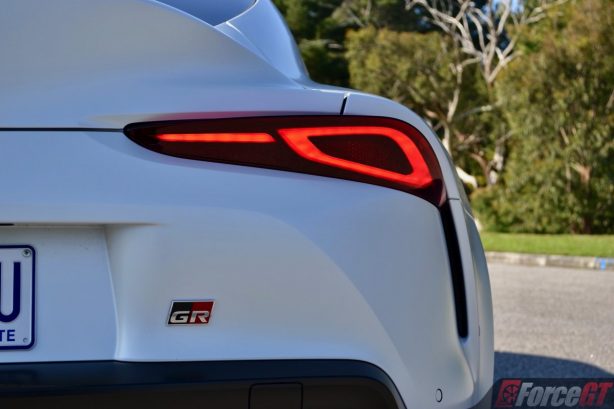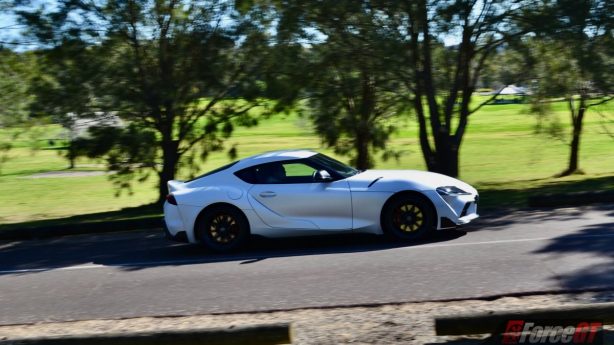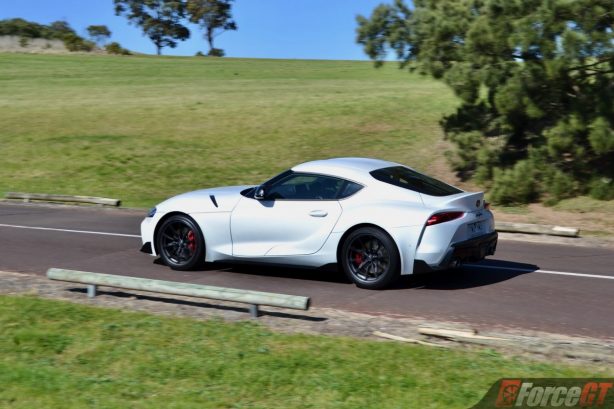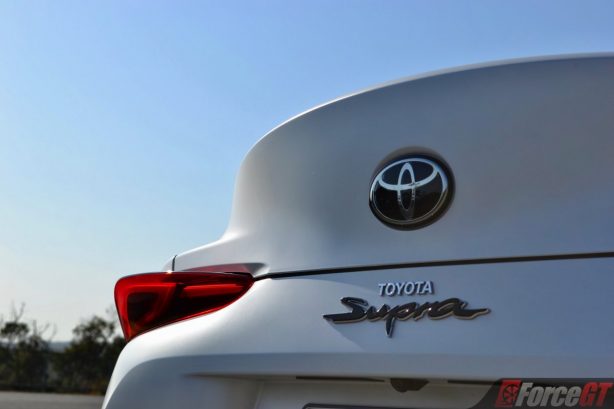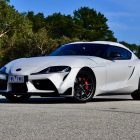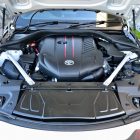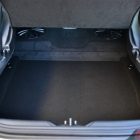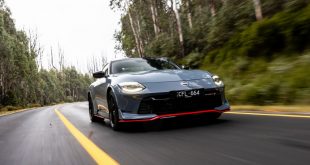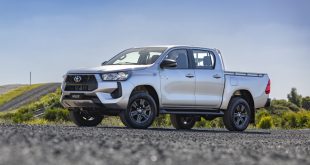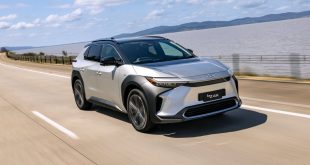Enthusiasts pleaded, Toyota listened. Four years after the initial launch of the GR Supra with an automatic transmission, a manual version is now finally offered. But Supra enthusiasts really have one other car to thank for Toyota’s decision and that’s the Nissan Z. Launched with a manual option in late 2022, the Nissan Z prompted Toyota to rethink their strategy with the GR Supra. And the consensus was to compete.
There’s one problem, however. There wasn’t a manual gearbox that’s compatible with the GR Supra. As we all know, the GR Supra is mechanically a BMW Z4 M40i underneath and that car has ever only been fitted with an automatic transmission. To produce the GR Supra manual, Toyota had to do a bit of tinkering with a ZF-sourced six-speed manual gearbox and spent a considerable amount of time parts swapping, fine tuning and getting everything a hundred percent.
It’s no easy task and we applaud Toyota for the effort and for keeping at heart the demands of Supra enthusiasts. Fortunately, despite the big dollars spent on engineering the manual gearbox, prices for the GR Supra have remained almost the same. The base GT trim costs $87,380 while the upper spec GTS grade is a $10,000 premium at $97,380. The prices exclude on road costs and are identical for both the automatic and manual variants.
Compared against the competition though, the GR Supra is still an expensive option. The Nissan Z, which only comes in a single specification, is priced at $75,800 – a big chunk off the Supra’s sticker. Even the all-new 2024 Ford Mustang is not dearer, with the manual version costing $77,000 and the automatic asking $80,900. Sharing the same engine as the GR Supra, the BMW M240i xDrive Coupe can also be had for around the same money at $96,000.
That said, considering the GR Supra’s actual donor car is the BMW Z4 M40i which changes hands at a hefty $139,800, perhaps Toyota found some justifications in the Supra’s pricing strategy.
Along with the introduction of the manual gearbox, a host of other updates have also been deployed to the 2024 GR Supra. Those include a more refined steering and retuned suspension with improved stabiliser bushings.
It’s also good to see that the updated GR Supra, in the GTS guise as tested here, now has a more Japanese-looking wheel design rather than the previous European styling, giving the sports car a racier, more authentic JDM (Japanese Domestic Market) appearance, despite its German underpinnings. Wheel size has remained the same at 19-inch, but the revised spoke pattern and the Titanium Dark Silver finish really set the car off. Each wheel is also some 1.2kg lighter than before, improving unsprung weight.
Three new exterior metallic shades accompany the new update, they are Volcanic Ash Grey, Dawn Blue and Avalanche White. The latter is what’s on our tester and it looks sensational, like some sort of frosty, glacier-like finish that accentuates the lines and curves of the Supra free from any distortion or reflection.
Disappointingly, the interior of the GR Supra has been spared from any updates other than the availability of the tan trim option. This means it still runs an older version of BMW’s iDrive infotainment system operated via a smaller-than-usual 8.8-inch centre screen. Functionality wise, it’s still good, there’s even wireless Apple CarPlay but the interface is dated. At this price point, the GR Supra can certainly do with a better system, but the reliance on BMW means being granted access to a newer iDrive system by the German marque is a different story.
The digital driving instrumentation panel also measures 8.8-inch and it’s another area where things could have improved further. There’re very little options for customisation here and compared against rival systems from the Nissan Z and Ford Mustang it just doesn’t look and feel sporty enough.
It doesn’t get better with the steering wheel, either. We’re talking about the design – chunky and uninspiring. For a car shaped as sexily as the GR Supra, it ought to have something better designed for the driver to steer with.
The good news is the bad news on the interior ends here. The rest of the cabin is sweet, with top-notch build quality, neat contrast trim stitching and a single unbroken piece of gloss carbon-fibre framing all the switchgear in the centre stack, including the short shifter for the manual gearbox.
The driving position is spot on, too. You sit low and tight and the sports seats wrap around your back like they should in a sports car. Forward visibility is fine but over the shoulder and rear view is not. You’ll need to heavily rely on the sensors and camera to reverse in tight spaces.
Being a strict two-seater (unlike previous generations of Supra), there’s obviously no space behind the front seats, but the 290-litre boot further back is good enough for a couple of grocery bags or small suitcases. And no there’s now no longer room for a set of track wheels anywhere inside the car. In fact, the car doesn’t even have a spare wheel, instead relying on a tyre repair kit.
Apart from the manual gearbox, the GR Supra manual’s oily bits are identical to the automatic version. There’s the BMW-sourced 3.0-litre twin-scroll turbocharged in-line six-cylinder engine up front that pushes out 285kW from 5800rpm to 6500rpm and 500Nm from 1800rpm to 5000rpm. Drive is sent to the rear axle where a limited slip differential sits and manages traction.
The engine is the highlight of the package, packing enormous punch right from the get-go with very little lag. At almost any rev, the surge of torque is colossal, which allows you to gather speed very quickly when you rev it out. The accompanying soundtrack is solid and satisfying, if not lacking a little attitude – an easy aftermarket fix.
The blitz to 100km/h takes 4.4 seconds in the manual, 0.3 seconds slower than the auto version. It’s not that the manual is slow by any means, it’s only because the GR Supra’s auto is a super quick transmission. What the manual lacks in acceleration time, it makes up for in engagement. It’s amazing how a manual gearbox can transform the driving feel of the GR Supra. That wonderful straight-six already feels great with the auto, but with the manual it feels even better, it feels special. DIY shifting allows you to feel more of the engine’s power, to be more in-tuned with the engine’s performance potential.
Granted, the manual isn’t the most precise box out there, but it’s still a joy to shift and the clutch is relatively easy for a high output rear-wheel drive sports car. With a short travel and low pick-up point, it doesn’t take long to get used to the manual box and once familiarised you’d be rowing through the gears smoothly.
The only complain we have about the manual is that it does take quite some force to slot it into reverse. We’re not sure if this had something to do with the fact that the car we drove had gone through a bit of abuse being a press car, or if this is just the way it is. Nevertheless it’s quite a chore putting it in reverse.
As mentioned, the manual dials up the excitement of the car by quite some margin compared to the auto, and this rings even more true when you’re wringing it out in the back roads. You just feel more connected to the car, being in complete control of the throttle and shifting.
The manual has an auto rev-match feature to help you execute the perfect downshifts, which we use quite a lot as the pedal position isn’t that great for heel-and-toeing. For the absolute purist, the feature can be turned off.
The Supra’s handling is almost faultless. It’s balanced, agile and light-footed, infused with a tinge of playfulness at the rear. Cornering is flat and grippy, with slight adjustability through the throttle. It’s so easy to drive the car at the limit. Because you sit so low and close to the rear axle, you feel a lot of yaw and feedback from from the chassis, you’re right in the middle of where all the action is and that’s a great driving experience.
Not that the pre-update model rode harshly, but the revised suspension tuning has improved ride comfort slightly. Rougher road surfaces are better rounded off for a more refined ride quality, without compromising road feel which is so important for a car like this. Adaptive damping is fitted which means you can cruise around in comfort mode or firm things up for sporty driving.
The manual model’s rated average fuel consumption is 8.9L/100km, some 1.4L/100km thirstier than the auto’s 7.5L/100km figure. The higher fuel use occurs mostly in city driving, where the manual’s rated 12.0L/100km is much worse than the auto’s 9.7L/100km. In the real world, we recorded an average consumption of 9.4L/100km with over 600km travelled, including freeway cruising and quite a bit of heavy-footed driving in the hills. It’s still one of the more efficient sports cars out there, especially when compared to the V8 Mustang and Nissan Z.
In terms of safety, the manual misses out on the auto’s adaptive cruise control (non adaptive only). Otherwise, all other essentials are there including lane departure warning, blind-spot monitoring, autonomous emergency braking, rear cross-traffic alert and reverse view camera.
Verdict
Design & Comfort
Performance & Handling
Quality
Economy
Equipment & Features
OUR SCORE
4.1/5
+ Plus
- 6MT amplifies performance and engagement
- Still looks amazing
- Superb driving position
- Livable
– Minus
- Auto is faster
- Reverse gear hard to engage
- Dated infotainment interface
Overall
If the brief was to produce a variant of the Toyota GR Supra that delivers a more focused driving experience with heightened engagement through a six-speed manual gearbox, it’s met the objective. But all that is only possible if the base car is good and the GR Supra is not just a good sports car, it’s an excellent one. And the 6MT further amplifies the sporting potential of the car, giving it a touch more attitude and personality to the satisfaction of enthusiasts and purists alike.
2024 Toyota GR Supra GTS 6MT Pricing and Specification
| Pricing (Excluding on-road costs): | $97,380 |
| Warranty: | 5-year / unlimited km |
| Country of Origin: | Japan/Germany. Manufactured in Austria |
| Service Intervals: | 12 months/15,000km |
| Engine: | Turbocharged 3.0-litre in-line six-cylinder petrol: 285kW @ 5800-6500rpm, 500Nm @ 1800-5000rpm |
| Transmission: | 6-speed manual |
| Drivetrain: | Rear-wheel drive |
| Power-to-weight Ratio (W/kg): | 193.7 |
| 0-100km/h (s): | Claimed: 4.4; Tested 4.5 |
| Combined Fuel Consumption (L/100km): | Claimed: 8.9; Tested: 9.4 |
| RON Rating: | 95 |
| Fuel Capacity (L): | 52 |
| Safety: | 7 airbags, ABS, BA, AEB, EBD, ESC, reverse camera, front and rear parking sensors, adaptive cruise control, blind spot monitoring, lane keep assist |
| Dimensions (L/W/H/W-B) mm: | 4,379/1,854/1,292/2,470 |
| Kerb Weight (kg): | 1,503 |
| Towing Capacity (kg): | N/A |
| Entertainment: | 8.8-inch touch screen, AM/FM/DAB+, Bluetooth, USB, AUX, wireless Apple CarPlay / wired Android Auto, navigation |
 ForceGT.com Car News, Car Reviews, Video Reviews, Tuning and much more.
ForceGT.com Car News, Car Reviews, Video Reviews, Tuning and much more. 